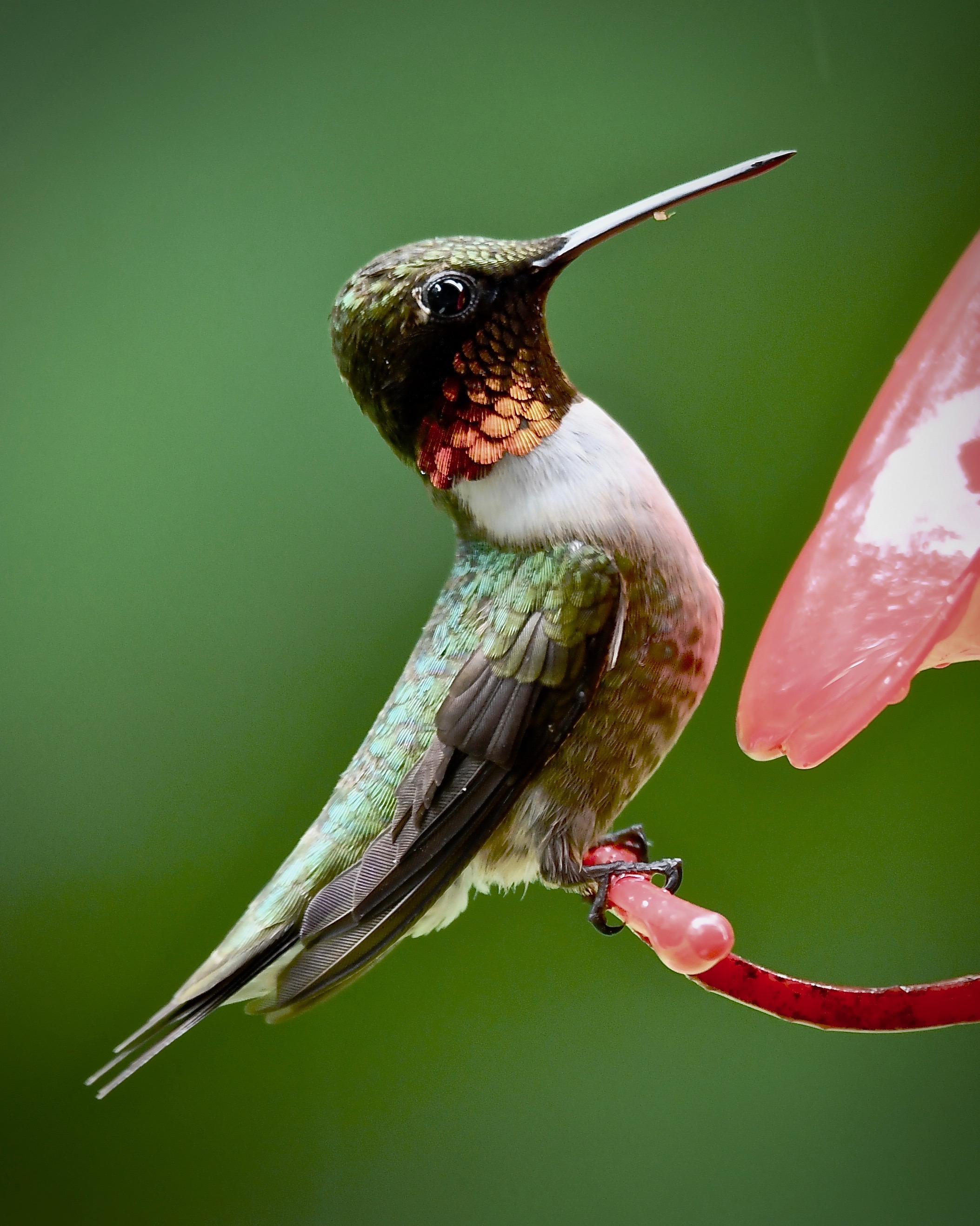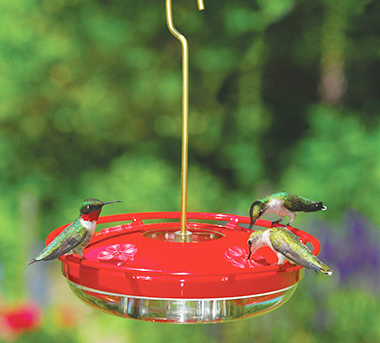Soon hummingbirds will ramp up their interest in feeders and the action will be fast and furious. August through mid-September is peak time for us to see hummingbirds at feeders. Based on frequently asked questions at the store there's a lot of confusion surrounding Ruby-throated hummingbirds and the first few months they are here. It is true Ruby-throated hummingbirds begin migrating through and into TN as early as mid-March. This year the first reported sighting by a customer was March 30. My first sighting was April 6th. By the way, I've recorded first of spring (FOS) hummingbird sightings for over 20 years and it's always between April 3 and April 12. And the first has always been an adult male.
Occasionally we here a customer say "I have all kinds of different hummingbirds" when in fact they really only have one kind, the Ruby-throated hummingbird. Only the adult male has the bright red throat while both sexes have an iridescent green back. Adult females and juvenile's look very much alike but will vary somewhat in plumage.
Although all Tennessee summer resident hummingbirds are here by mid-May, most people will see very little of them, and activity at feeders will be infrequent and minimal until at least early to mid-July when there is a sudden surge.
It is thought by many the reason for this sudden surge is they have just "come back" from where they've been. Actually, it is that the summer resident hummingbirds have concluded raising one or even two broods of offspring and are ready to begin taking advantage of the free nectar in the feeders you've provided. Also, the added activity is indicative of recently fledged hummingbirds beginning to understand and visit feeders. Then as we move into August hummingbirds that have been north of us, as far as Canada, will begin their migration south and stop at feeders along the way.
It must be remembered hummingbirds don't travel all the way from central and south America because there are hummingbird feeders here. They DO NOT NEED the feeders but will take advantage of them when they are ready. Hummingbirds have been migrating here for thousands of years to breed and to take advantage of the abundance of insects, which is their primary food source. They would come here even if hummingbird feeders did not exist.
Since hummingbirds feed on small insects there is an alternative to offering only nectar. Try placing some fruit in a mesh sack or container with holes, and hang it near your hummingbird feeder. The fruit will draw fruit flies which the hummingbirds will readily devour. It is quite interesting to see a hummingbird dart its specialized tongue out to snag the flies. Last year we introduced a new feeder called the Humm-Bug that is designed to hold fruit and draw fruit flies.
Aspects high view Hummingbird feeders are some of our favorite feeders. They are easy to clean, fill, and come with a built in ant moat. The high view refers to the new perch design which is raised up compared to older models. This helps keep the feeder from obscuring the bird while perching.








